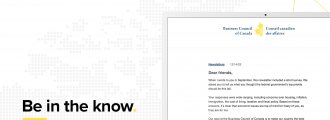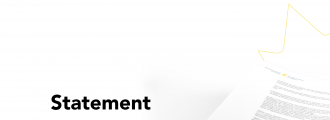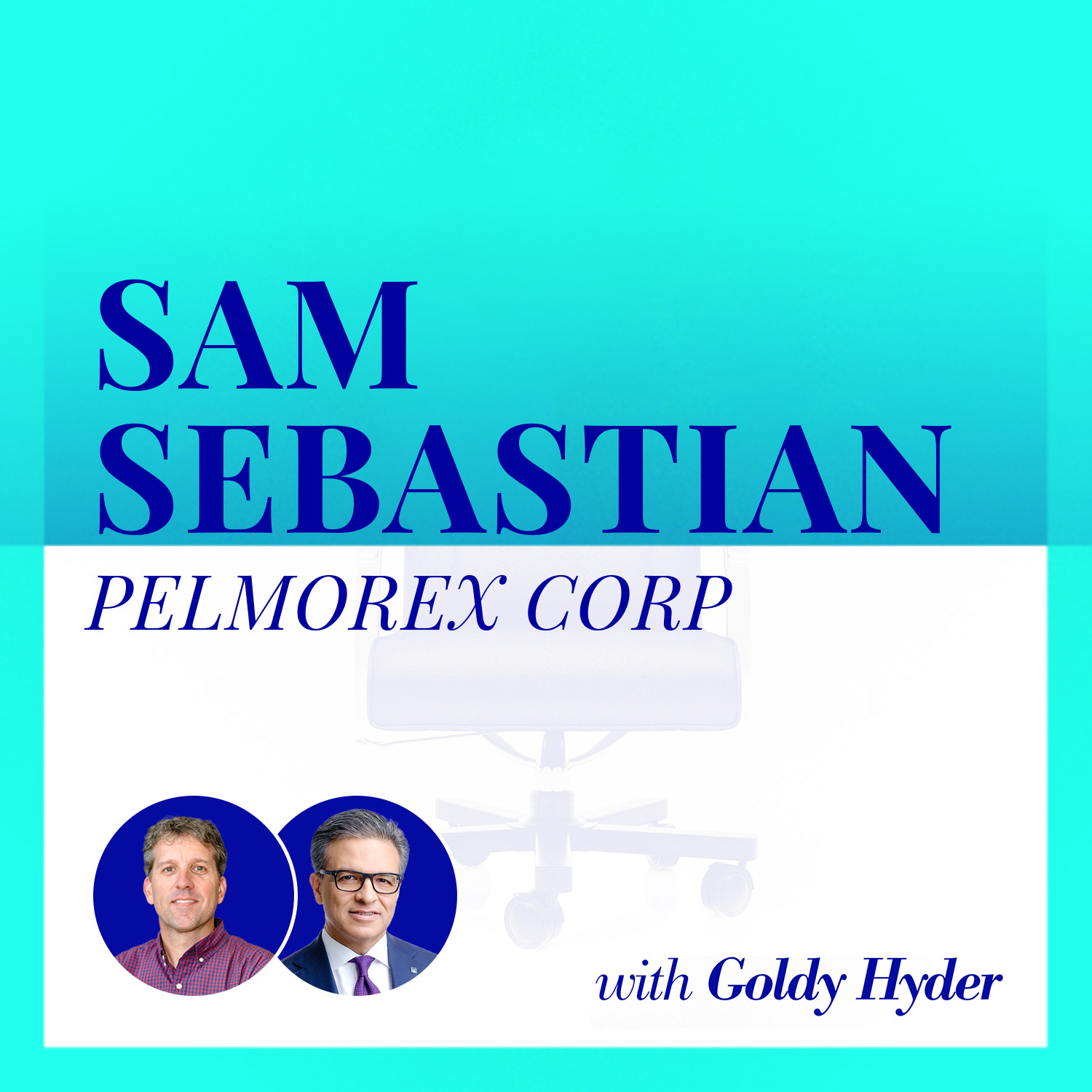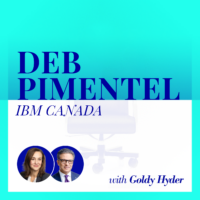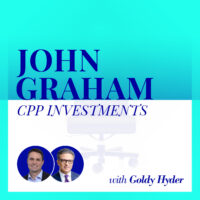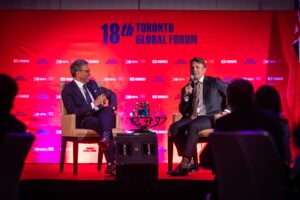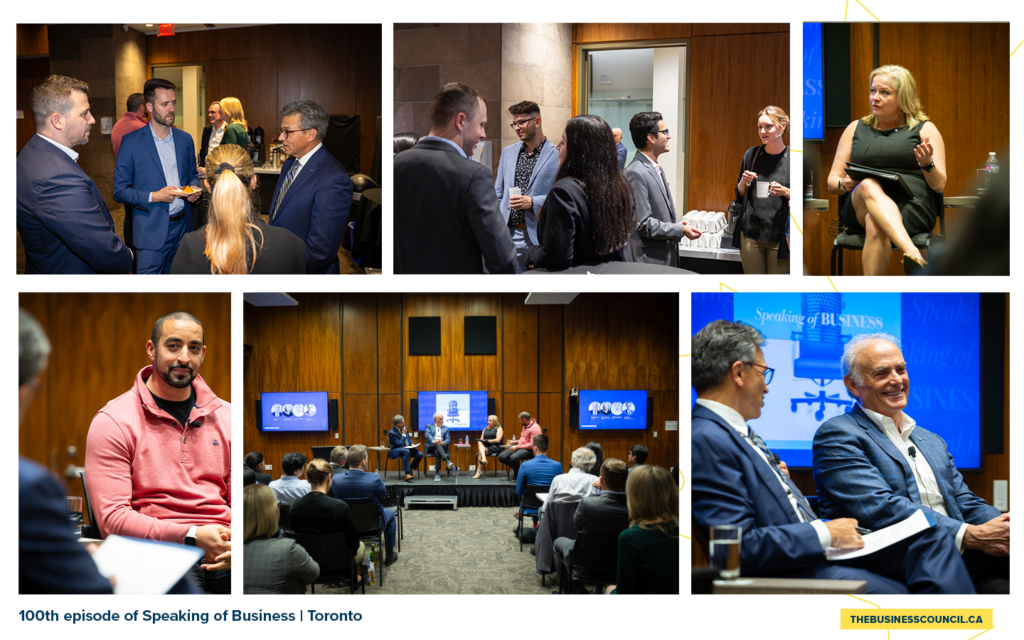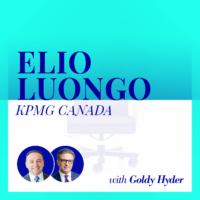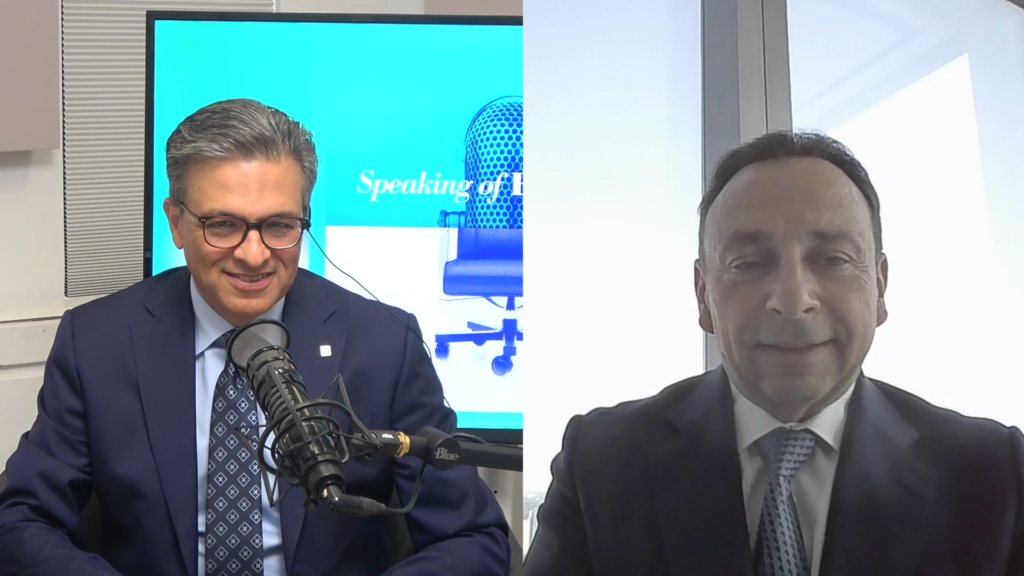Sam Sebastian, President and CEO of Pelmorex, discusses the use of alerts and tracking in the fight against COVID-19, learning how to innovate in the midst of the pandemic and how employees in Madrid provided an early warning for what to expect in North America.
In light of the COVID-19 emergency, we’ve temporarily suspended our regularly scheduled series of conversations with Canadian CEOs. But we’re not going away. Instead, we’re going to pivot to the health emergency itself. We’re going to explore the impact on companies and workers across the country. And we’re going to find out how business leaders are responding to crisis.
Goldy Hyder:
I’m Goldy Hyder of the Business Council of Canada. Welcome to a special edition of Speaking of Business, conversations with business leaders about the COVID-19 crisis.
Goldy Hyder:
One constant challenge for governments and health officials through this pandemic has been communication. How do you get important messages out to Canadians? It’s something my guest today has been thinking a lot about. As the President and CEO of Pelmorex, Sam Sebastian overseas an international weather information and data management company. Through brands like the Weather Network, Pelmorex reaches Canadians from coast to coast to coast. How is that reach being put to use in this pandemic? Let’s find out.
Goldy Hyder:
Welcome to the podcast, Sam.
Sam Sebastian:
Thanks for having me Goldy. I appreciate it.
Goldy Hyder:
Now you’ve been working with governments in terms of your alert system. How’s it being used in this crisis?
Sam Sebastian:
First off, let me just do a big thanks to all the healthcare workers and myriad of other frontline essential workers in Canada and Spain and the US, the three countries where we have offices. You got to start anything off that way these days and a special thanks to you and the Business Council for everything that you’re doing.
Sam Sebastian:
We’ve got a great public-private partnership with the Government of Canada over the last 10 years, plus we’ve managed the backend, the technical infrastructure of the emergency alert system and when this whole crisis began we worked closely with our provincial council, the emergency management officials within each province, in addition to Environment Canada, are the folks that are alert issuers. Typically alerts are weather related, a majority of those are. Sometimes they’re a threat to life type issues like perhaps a wildfire or an Amber alert.
Sam Sebastian:
We work closely with the provinces to walk through what some of the use cases might be for COVID and over the last probably two or three weeks, three provinces, Ontario, Nova Scotia and Saskatchewan, leveraged the platform to deliver COVID updates via the alert system on wireless devices. We continue to work closely with the alert issuers as well as the federal government to see how best they could leverage the alert system, which has been a great asset for the country going forward to continue to alert Canadians on the key information that they need to know.
Goldy Hyder:
What impact is the pandemic having on your overall business? It’s a diverse business, but how are you dealing with things?
Sam Sebastian:
I mean, it’s tough. We’re better than some, we’re worse than others. We’re primarily an advertising business and so whenever there’s uncertainty, advertising, typically, is the first to go. No one likes uncertainty and especially if you’re a CEO or a chief marketing officer and you’re not exactly sure what the future holds, you may pull back some advertising and keep some cash on hand for when you have a better sense of what the future is. So we’re definitely feeling it.
Sam Sebastian:
Our platforms, for the most part, like the Weather Network, we’re a massive platform so we’re in front of about 60 million users around the world. The number of users for the most part has stayed pretty consistent. Folks still need to come to our platforms to see what the weather is like for the day. They aren’t nearly as engaged. So engagement’s probably down 20, 25%. Our afternoon traffic when folks are checking in to see what the drive time commute will be like, we don’t see that as much. So we’re definitely seeing consumer impact but most of the feeling is on the advertising side versus the usage side.
Sam Sebastian:
From a television perspective, we’re down a little bit because most folks are going to news-related type sites. But we’ll survive and thrive again. But, boy, what a challenge to manage through something like this.
Goldy Hyder:
Now when you’re in the weather business, you’re in the prediction business and you get to some extent some early warning systems, if you will, but you’ve had an early warning system of your own when it comes to this pandemic and that is your operations in Madrid. How is it that you were able to learn from what was happening in Spain in terms of the best practices, particularly, and how did that prepare you for what was to come in Canada?
Sam Sebastian:
We’ve got about 40 employees in Madrid. We manage the largest weather player there, El Tiempo, and this hit them early and it hit them hard. When I talked to Carlos, who runs our team there, once, twice a week, and we were just starting to talk about it more on our agenda in the January, February timeframe in our normal one-on-ones. Then late February, early March, it was clear that this was a big deal in Madrid. Our team in Madrid actually shut their office down on March 11th and that was coming directly from the government. Now, luckily we’re pretty much a digital shop anymore so they could do that almost overnight and we had everyone set up working from home with no major issues.
Sam Sebastian:
We didn’t see nearly as many Canadian companies taking early action like that because they probably didn’t have the forecast that we were seeing with respect to Madrid. So two days later we made the decision, on Wednesday, the day that Spain went working from home, we announced it to the employees on a Thursday and we moved everyone home on Friday the 13th of March. That was 450 employees across four offices, one in the US and three in Canada.
Sam Sebastian:
We were prepared and we moved early, which we felt was the right thing to do. Luckily over the last couple of years we had been doing our own digital and technology transformation inside the company. So we had the tools in place and the culture and the communication protocol and the development approaches, et cetera. It was a very agile type of setup that we really were able to do that without any major missteps. The hardest part was television programming. We have six feeds in two languages in Canada and we kept a skeleton crew, three shifts of maybe 10 folks, in the office at once and that’s all that we have in our Oakville office to continue to make sure the television feeds worked well. Many of our on-camera presenters, our editors, our writers work from home and we just had a little bit of a head start given what we were seeing in Madrid.
Sam Sebastian:
I think the second part about watching our team in Madrid go through this. We’ve only had one case of COVID and it was in Madrid, and we have an all hands now every Friday as we’re dealing with this. I had Carlos come and speak to the rest of the company, two or three weeks in, because I wanted the company to hear the health toll that this was taking. In Canada we just hadn’t seen the surge yet, but in Madrid, they were living it and you could just see it in Carlos’ eyes and the stories he was telling about.
Sam Sebastian:
Luckily our one case of COVID is healthy and back home. You had relatives who were passing away who were extremely sick. It was just a really tough situation, but it provided the type of empathy and knowledge for the folks working overseas, here in Canada to understand what might be along the way and also just to be there for the employees in the time that they needed the most.
Goldy Hyder:
Well the next thing that we’re focused on is, of course, how do you responsibly restart the economy without triggering a second wave. Again, something we can learn from other countries, effective testing and tracking seemed to be at the core of it. Now how can you, given the nature of your business, perhaps be helpful with the tracking side of things?
Sam Sebastian:
This is kind of our business. In order to send dedicated forecasts to our users on the go, we ask them when they download our app, if we can have their location. So we’re kind of in this location tracking business in some ways. We have a super high bar on privacy. We’re extremely conservative and so we’re very careful and responsible with how we use that particular data. But we know the business and so we’ve been talking to the government as they look at various different ways and different use cases of leveraging data for contact tracing for exposure notification. I used to work with Google for 11 years, so I know kind of what Google and Apple are doing with their new exposure notification platforms. Then we’ve also begun to collect some anonymized and aggregated insights about how Canadians are moving about or not and if that can be helpful, the government will work with them as well.
Sam Sebastian:
So it’s mostly just been an advisor to a few of the different groups within the government as they navigate the best way to leverage technology in the right way with a privacy-first approach, which we’ve always taken as they navigate this next phase of the response to the virus.
Goldy Hyder:
So speaking of navigating, how are you navigating as a leader in terms of your employees, providing them the confidence and the reassurance and the ability to continue to do what you do well, which is innovate and relying on editorial ideas and things like that, how are you doing it?
Sam Sebastian:
It’s been interesting. I’ve been leading the company for the last two and a half years and we’ve had a transformation and strategic plan in place for the last two where it’s a cultural evolution and transformation communications. I’m a big believer in authentic leadership and vulnerability and so I’ve been putting these seeds in place, transparency over communication. I’ve been putting these seeds in place the last two years and we’ve had to leverage every bit of that transformation over the last seven weeks, six and a half weeks. And had we not begun a lot of the work that we have done culturally and gotten employees comfortable with ideas coming from everywhere, expecting innovation in every group, being massively transparent so that because we’re moving so fast, if everyone doesn’t know everything that’s going on in the organization and we want to move this fast, how can folks possibly innovate? So these were some foreign concepts in my first year or two of the company but now, when we need these elements, most were prepared.
Sam Sebastian:
For example, we had done one all hands a year when I first started, I wanted to do once a week, but everyone said, “Oh that’s way too much. We don’t need to talk to you that much.” As soon as this crisis hit, the organization, almost 200 employees, said, “We need to hear from you once a week, what’s going on and we want constant communication.” Because they saw how well that worked in the normal environment and now, when we needed it most, everyone has stepped up and applied everything that we’ve been practicing for the last two years.
Sam Sebastian:
The big component is this concept that great ideas and innovation come from everywhere. In a moment like this, you need leverage where all 500 employees are coming up with great ideas, changing processes to make them more efficient, figuring out how the heck we’re going to be able to put a 24/7 live weather program on television, but from home. All these great ideas, I don’t have them, I can’t figure it all out. This is a playbook that’s never been written before, but our employees, because they had built the muscles required for this type of pandemic, this type of crisis, they were ready.
Sam Sebastian:
That’s what I’ve learned the most and how the company has responded the best is simply we unleashed the employees and we had the technical tools, we had the collaboration, the culture, the agility, the processes in place that allowed, basically, the employees to take over. I had to set a bit of a vision, make sure that I was open and transparent with the employees as much as possible, but for the most part, our senior management team and our offices in Canada, the US and Spain have really just stepped up, lead and they’re getting us through it.
Goldy Hyder:
Thanks for sharing this with us today, Sam. There’s a lot of insight and a lot of knowledge in there that I think will be a great value to our listeners. Appreciate you taking the time.
Sam Sebastian:
Thanks Goldy.
Goldy Hyder:
Sam Sebastian is the President and CEO of Pelmorex. We’ve heard a wide range of voices and perspectives on the COVID-19 crisis and I encourage you to listen to more of our conversations at SpeakingOfbBz.ca or wherever you get your podcasts. Until next time, I’m Goldy Hyder. Thanks for joining us.

